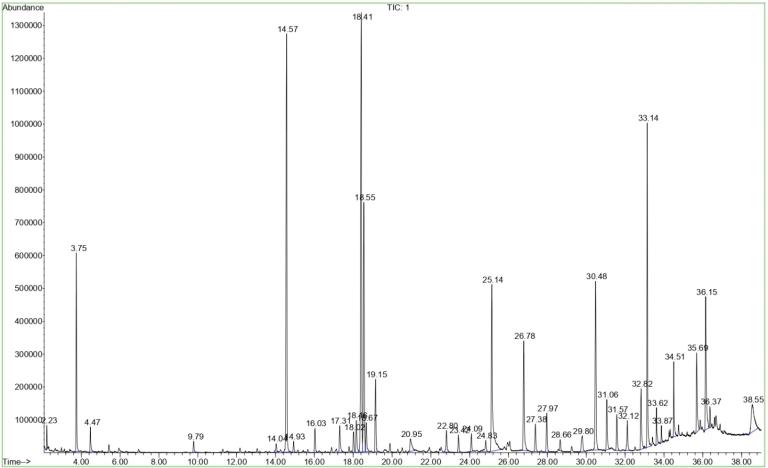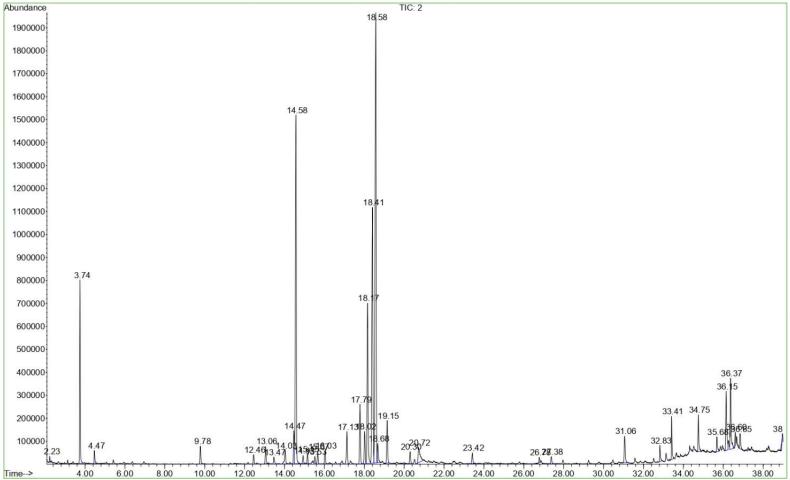What is Fatty Acid Metabolism?
Fatty acids are organic molecules characterized by a long hydrocarbon chain with a carboxyl group (-COOH) at one end. They are classified based on the presence of double bonds in their carbon chain as saturated fatty acids (no double bonds) or unsaturated fatty acids (one or more double bonds). These biomolecules serve as building blocks for complex lipids such as triglycerides and phospholipids, which are crucial for various cellular functions.
Fatty acid metabolism encompasses a series of intricate biochemical processes involved in the synthesis, degradation, and regulation of fatty acids within cells. This metabolic pathway is tightly regulated to ensure the balance between energy storage and utilization. The key players in fatty acid metabolism include enzymes, transporters, and regulatory proteins.
The process of fatty acid metabolism can be broadly divided into two main pathways: fatty acid synthesis (lipogenesis) and fatty acid oxidation (lipolysis). Lipogenesis occurs in the cytoplasm of cells and involves the synthesis of fatty acids from acetyl-CoA, while lipolysis takes place in the mitochondria and involves the breakdown of fatty acids to produce energy through beta-oxidation.
Fatty Acid Metabolism Analysis at Creative Proteomics
Fatty Acid Profiling: Our cutting-edge mass spectrometers, like Thermo Fisher Q Exactive series and AB Sciex TripleTOF series, accurately identify and quantify various fatty acids in biological samples. Additionally, we utilize a GC-FID platform for fatty acid analysis.
Fatty Acid Composition Analysis: With expertise in lipidomics, we thoroughly analyze the relative abundance and distribution of saturated and unsaturated fatty acid species in your samples. This provides valuable insights into the metabolic state and lipid profiles.
Fatty Acid Metabolite Identification: Complex biological samples can be challenging, but our advanced data analysis algorithms and comprehensive databases enable us to confidently identify and characterize specific fatty acid metabolites.
Quantitative Analysis of Fatty Acid Metabolites: Our quantitative analysis allows precise determination of fatty acid concentrations in your samples, providing crucial information about fatty acid metabolism in different biological systems.
Metabolic Pathway Analysis: By integrating fatty acid profiling data with other metabolomic or proteomic datasets, we offer a comprehensive analysis of metabolic pathways, helping you understand the interplay between fatty acid metabolism and other cellular processes, including key regulatory nodes.
 Workflow for Plant Metabolomics Service
Workflow for Plant Metabolomics Service
List of Fatty Acid Metabolites Analyzed (including but not limited to)
Saturated Fatty Acids
| Acetic acid |
Butyric acid |
Caprylic acid |
Capric acid |
| Lauric acid |
Myristic acid |
Palmitic acid |
Stearic acid |
Monounsaturated Fatty Acids
Polyunsaturated Fatty Acids
| Linoleic acid |
Linolenic acid |
Arachidonic acid |
Eicosapentaenoic acid (EPA) |
Docosahexaenoic acid (DHA) |
Hydroxy Fatty Acids
| Ricinoleic acid |
Hydroxystearic acid |
9,10-Dihydroxystearic acid |
9,12,13-Trihydroxyoctadecanoic acid |
Oxylipins
| Jasmonic acid |
Methyl jasmonate |
12-Oxo-phytodienoic acid (OPDA) |
9,10,12-Trihydroxyoctadecenoic acid (TOD) |
Glycerolipids
| Triacylglycerols (TAGs) |
Digalactosyldiacylglycerol (DGDG) |
Monogalactosyldiacylglycerol (MGDG) |
Phosphatidylcholine (PC) |
| Phosphatidylethanolamine (PE) |
Phosphatidylglycerol (PG) |
Phosphatidylinositol (PI) |
Phosphatidic acid (PA) |
Others
| Free fatty acids (FFAs) |
Glycerol |
Glycolipids |
Sulfolipids |
Waxes |
Why Need Fatty Acid Analysis?
Understanding Cellular Metabolism
Fatty acids are central to cellular metabolism, serving as a crucial energy source and building blocks for various cellular components. Fatty acid analysis allows researchers to investigate the composition, distribution, and metabolism of fatty acids in different tissues and under various physiological conditions.
Crop Improvement
Fatty acid analysis allows researchers to assess and manipulate the fatty acid composition of crop plants to improve their nutritional value, flavor, and shelf life. Understanding the metabolic pathways involved in fatty acid synthesis and modification can aid in the development of genetically modified crops with desirable traits.
Plant Stress Responses
Plants respond to various stressors, such as drought, salinity, and temperature extremes, by altering their fatty acid profiles. Fatty acid analysis helps researchers unravel the intricate mechanisms underlying these stress responses, providing insights into the adaptation and survival strategies employed by plants.
Sample Requirements for Fatty Acid Metabolites Assay
| Sample Types |
Minimum Sample Size |
Biological Repeat |
| Plant Samples |
Roots, stems and leaves, floral parts, fruits/seeds, rhizomes, buds/tender leaves, tissue sections, pollen, bark, trunk/wood, resin/gum, resin acids, seedlings/young plants, rhizosphere soil, root exudates. |
100 mg - 1 g |
3-6 |
| Animal Samples |
Blood/plasma
Urine
Tissues (liver, muscle, adipose, etc.), brain tissue
Feces |
1-2 ml
5-10 ml
100-200 mg
1-2 g |
Humans >30/group
Animals 8-10/group |
| Cell Samples |
Adherent cells, suspension cells, cell cultures |
1×107 |
Humans >30/group
Animals 8-10/group |
Case 1. GC-MS Analysis Reveals Fatty Acid Composition of Medicinal Plants with Potential Anti-Diabetic Properties
Background:
Diabetes mellitus is a global health concern, and its prevalence is rapidly increasing, leading to a significant burden on healthcare systems worldwide. The development of diabetic angiopathies, such as cardiovascular diseases and microcirculatory complications, contributes to the disability and mortality associated with diabetes. Addressing this alarming situation requires the exploration of immediate solutions, including the optimization of pharmacotherapy and the search for new drugs to prevent and treat diabetes and its complications.
Sample:
The study utilized herbal raw materials including Urtica dioica L. leaf, Rosa majalis L. fruits, Vaccinium myrtillus L. leaf, Mentha piperita L. herb, and Taraxacum officinale L. roots. These plant materials were harvested from specific regions in Ukraine and were processed according to the Good Agricultural and Collection Practices (GACP) guidelines. The authenticity of the plant materials was verified by the Department of Pharmacognosy with Medical Botany at Ivan Horbachevsky Ternopil National Medical University, Ukraine. A sample of the herbal raw materials was also deposited in the Departmental Herbarium for future reference.
Technical Platform and Procedure:
The fatty acid composition of the herbal raw materials was analyzed using gas chromatography-mass spectrometry (GC-MS). Chromatographic separation was performed using a gas chromatography-mass spectrometry system. A specific capillary column was used for the separation, and the analysis was carried out under temperature programming conditions. The samples were subjected to pre-column derivatization to convert the fatty acids into their methyl esters. The identification of fatty acids was done by comparing the retention time with standard references and using mass spectrum library databases.
Results
The GC-MS analysis revealed the presence of various fatty acids in the different plant components. In Urtica dioica L. leaf and Vaccinium myrtillus L. leaf, 12 fatty acids were identified, including 8 saturated, 2 monounsaturated, and 2 polyunsaturated fatty acids. Rosa majalis L. fruits and Taraxacum officinale L. roots showed the presence of 13 fatty acids, including 9 saturated, 2 monounsaturated, and 2 polyunsaturated fatty acids. Mentha piperita L. herb exhibited 14 fatty acids, including 10 saturated, 2 monounsaturated, and 2 polyunsaturated fatty acids.
The predominant fatty acid component in all plant samples was palmitic acid, followed by oleic acid. Linoleic acid and linolenic acid, both polyunsaturated fatty acids, were identified in all five plant components. The total content of fatty acids varied among the different plant materials, with the highest content observed in Rosa majalis L. fruits.
 GC-MS chromatogram of fatty acids in Urtica dioica L. leaf.
GC-MS chromatogram of fatty acids in Urtica dioica L. leaf.
 GC-MS chromatogram of fatty acids in Rosa majalis L. fruits
GC-MS chromatogram of fatty acids in Rosa majalis L. fruits
Reference
- Savych, Alona, et al. "Analysis of fatty acid composition content in the plant components of antidiabetic herbal mixture by GC-MS." Pharmacia 68.2 (2021): 433-439.


 Workflow for Plant Metabolomics Service
Workflow for Plant Metabolomics Service GC-MS chromatogram of fatty acids in Urtica dioica L. leaf.
GC-MS chromatogram of fatty acids in Urtica dioica L. leaf. GC-MS chromatogram of fatty acids in Rosa majalis L. fruits
GC-MS chromatogram of fatty acids in Rosa majalis L. fruits

